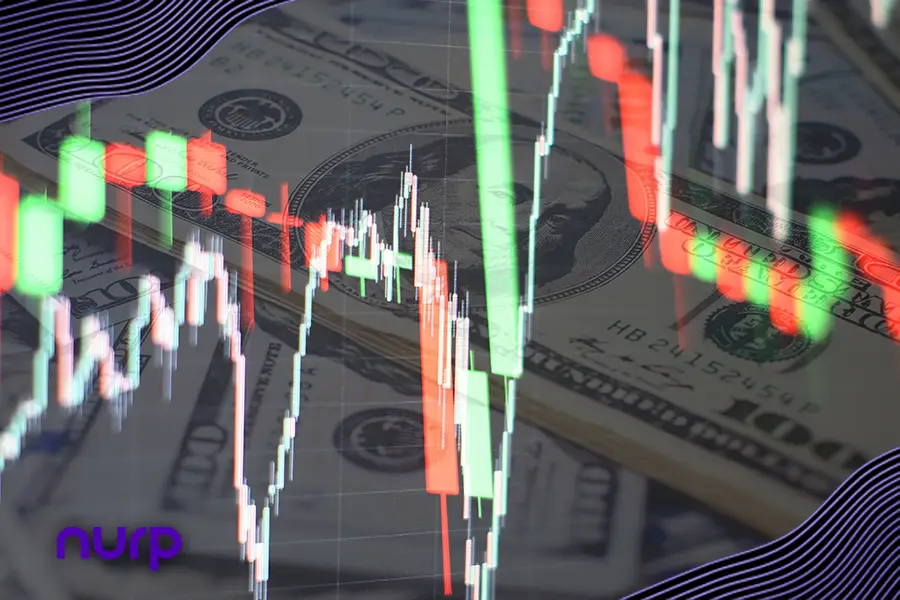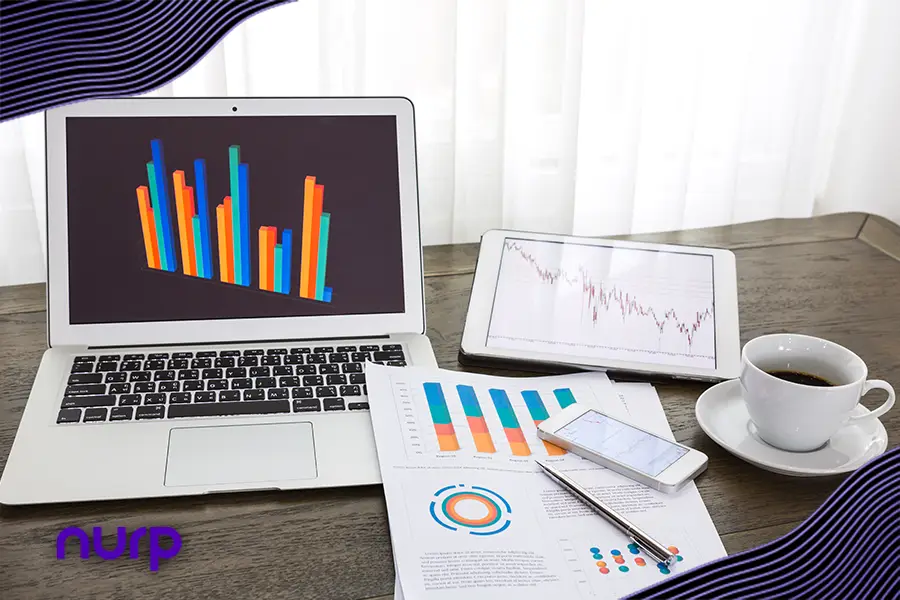Key takeaways:
Quant trading uses algorithms and data to improve trading decisions, moving away from traditional subjective trading methods.
Originating in the 1960s, it has grown due to better computing and data access, utilizing statistical models for systematic trading advantages.
Strategies include statistical arbitrage and momentum trading, driven by comprehensive risk management and data analysis for informed trades.
It enhances market efficiency but requires significant technological investment and faces regulatory and ethical challenges.
AI and machine learning advancements promise more accurate market predictions, facing growth within ethical and regulatory frameworks for sustainable development.
In the fast-paced world of financial markets, where time is money and split-second decisions can make or break fortunes, a new breed of trading has emerged.
Quantitative or quant trading for short.
With its reliance on sophisticated algorithms, data analysis, and precision, quant trading has revolutionized how professionals approach the market. In this article, we will delve into the world of quant trading, exploring its foundations, strategies, and implications for the future of finance.
What is Quant Trading?
Quantitative trading can be defined as using mathematical models, statistical analysis, and computer algorithms to identify and execute trading opportunities. Unlike traditional discretionary trading, which relies heavily on human intuition and subjective judgment, quant trading seeks to leverage data-driven insights and systematic approaches to gain an edge in the market.
The Foundations of Quant Trading
Quant trading traces back to the 1960s when pioneers like Ed Thorp and Fischer Black developed groundbreaking models to analyze and predict market behavior. Over the years, advancements in computing power and access to vast amounts of financial data have propelled the field forward, enabling the development of increasingly complex and sophisticated trading strategies.
Key Components of Quant Trading
Data: At the heart of quant trading lies data. Quant traders utilize various data sources, including historical price data, market indices, economic indicators, news sentiment, and alternative data sets. This wealth of information is processed and analyzed to uncover patterns, correlations, and anomalies that can be exploited for trading purposes.
Algorithms: Algorithms are the building blocks of quant trading strategies. These mathematical models define the rules for trading decisions, such as when to buy or sell, how much to invest, and when to exit a position. The algorithms are designed to execute trades based on predefined conditions, removing emotional biases and ensuring consistent execution.
Risk Management: Effective risk management is a crucial aspect of quant trading. Sophisticated risk models are employed to assess and mitigate potential risks associated with different trading strategies. This includes setting position sizing limits, implementing stop-loss orders, and continuously monitoring portfolio performance.
Quant Trading Strategies
Quantitative trading strategies vary widely, depending on individual traders’ or firms’ objectives, time horizons, and risk tolerances. Here are a few common quant trading strategies:
Statistical Arbitrage: This strategy seeks to identify pricing discrepancies between related securities by analyzing statistical relationships. Trades are executed when the model detects deviations from historical patterns, aiming to profit from the reversion to the mean.
Momentum Trading: Momentum trading exploits the idea that securities that have exhibited strong price trends in the past are likely to continue doing so shortly. Quant traders look for stocks or other assets with momentum indicators and enter positions to ride the trend.
Market-Making: Market-making strategies involve providing liquidity by continuously quoting bid and ask prices. Market makers aim to profit from transaction costs and price imbalances by capturing the spread between buying and selling prices.
Implications and Challenges
Quant trading has profoundly impacted financial markets, introducing efficiency, liquidity, and increased trading volumes. However, it also presents challenges and considerations:
Technology and Infrastructure: Successful quant trading requires robust technology infrastructure, including high-speed connectivity, advanced data processing capabilities, and powerful computing resources. The costs associated with building and maintaining such infrastructure can be significant, posing barriers to entry for smaller players.
Regulatory Landscape: As quant trading grows in prominence, regulators closely monitor its impact on market stability and fairness. Rules and regulations continuously evolve to ensure transparency, prevent market manipulation, and address systemic risks associated with algorithmic trading.
Human Element: Human expertise remains essential, while algorithms can analyze vast data and execute trades precisely. Human traders can add value by designing effective strategies, adapting to changing market conditions, and exercising judgment in risk management.
The Future of Quant Trading
As technology advances, the future of quant trading looks promising.
Here are a few key trends:
Machine Learning and Artificial Intelligence: Integrating machine learning and AI techniques into quant trading models holds great potential for improving prediction accuracy and adaptability to changing market conditions.
Alternative Data: Quant traders increasingly explore alternative data sources, such as satellite imagery, social media sentiment, and web scraping, to gain unique insights and enhance their models’ predictive power.
Ethical Considerations: As quant trading expands, ethical considerations surrounding data privacy, fairness, and algorithmic biases are gaining attention. Market participants and regulators actively work to ensure responsible and ethical use of quantitative techniques.
Quant trading has revolutionized the world of finance, harnessing the power of data and algorithms to drive trading decisions. With its ability to process vast amounts of information, execute trades swiftly, and manage risks systematically, quant trading has become a dominant force in financial markets.
However, challenges and considerations remain, and the future will undoubtedly bring new opportunities and complexities.
The integration of these technologies has the potential to enhance prediction accuracy, adaptability, and risk management capabilities.
Ethical considerations
Furthermore, the ethical considerations surrounding quant trading will continue to gain importance. Market participants and regulators increasingly emphasize the responsible and ethical use of quantitative techniques, addressing concerns related to data privacy, fairness, and algorithmic biases. Striking a balance between innovation and ethical practices will be crucial for the long-term sustainability and credibility of quant trading.
The impact of quant trading extends beyond the financial markets. It has also influenced other industries, such as risk management, asset allocation, and portfolio construction. Analyzing vast amounts of data and making data-driven decisions has proven valuable in various domains.
Risk management is an area where quant trading has made significant contributions. By employing sophisticated risk models, quant traders can identify potential risks and implement measures to mitigate them. These models consider factors such as volatility, correlation, and market conditions to assess a portfolio’s overall risk exposure. This enables traders and investors to make informed decisions and safeguard their investments.
Asset allocation
Quant trading has also revolutionized asset allocation and portfolio construction. Traditional approaches to asset allocation often rely on subjective judgment and historical performance. In contrast, quant traders leverage data analysis and algorithmic models to optimize asset allocation based on risk appetite, return objectives, and market conditions. This data-driven approach enables more efficient resource allocation and potentially enhances portfolio performance.
The rise of quant trading has led to specialized firms and hedge funds focusing solely on quantitative strategies. These firms hire data science, mathematics, and computer programming experts to develop and refine trading algorithms. The competition among these firms has driven constant innovation and advancements.
Additionally, institutional investors’ increased adoption of quant trading strategies has led to a more level playing field, as individual investors can now access similar tools and strategies.
Data biases
Another challenge is the potential for data biases. Quant traders heavily rely on historical data to develop and validate their models. However, historical data may contain biases and anomalies that can impact trading strategies. Traders must be diligent in identifying and addressing these biases to ensure the accuracy and reliability of their models.
Regulatory scrutiny is another important consideration in the world of quant trading. Authorities increasingly focus on maintaining fair and orderly markets and preventing market manipulation. Regulations, such as circuit breakers and restrictions on high-frequency trading, have been implemented to ensure market stability. Market participants must stay abreast of regulatory developments and comply with the evolving legal framework.
Quant trading is still the king
Despite the challenges, it continues to grow and adapt to changing market conditions. Integrating machine learning and artificial intelligence has opened new avenues for research and development. These technologies enable traders to analyze vast amounts of structured and unstructured data, allowing for more accurate predictions and adaptive strategies.
Using alternative data sources is also gaining traction in the quant trading realm. Satellite imagery, social media sentiment analysis, and web scraping are examples of alternative data that can provide unique insights into market trends and consumer behavior. Incorporating alternative data into trading models can uncover new opportunities and improve performance.
Looking ahead, the future of quant trading holds great promise. Technology will continue to advance, providing traders with more sophisticated tools and capabilities. The integration of quantum computing, for example, can revolutionize quantitative finance by significantly enhancing computational power and solving complex optimization problems.
Democratization of Quant trading
Furthermore, the democratization of quant trading is likely to continue. As technology becomes more accessible and affordable, individual investors and smaller firms can leverage quantitative strategies to improve investment outcomes. Online platforms and trading tools catering to retail investors already incorporate quant-driven features, empowering individuals to make data-driven investment decisions.
The Final word
Quant trading has transformed the financial landscape by harnessing the power of data and algorithms. Its ability to process vast amounts of information, execute trades precisely, and manage risks systematically has made it an integral part of the modern financial ecosystem. While challenges exist, advancements in technology, the integration of machine learning, and a focus on ethical considerations are shaping the future of quant trading. As the field evolves, embracing innovation, staying informed about regulatory developments, and upholding ethical standards will be crucial to success in this dynamic and ever-changing domain.
Remember, quant trading is a complex field, and this article only scratches the surface of its intricacies. Aspiring quant traders should seek further education, engage in rigorous research, and consult with industry professionals to better understand the subject.
If you want to learn how we decode the market using a time-tested and sophisticated trading algorithm that thousands of high-income earners use weekly, read this case study. It will show you the strategies we used to outperform the market.
The post Quant Trading: The Power of Data and Algorithms first appeared on Nurp.com.








